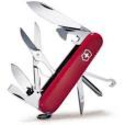-
About
- About Listly
- Community & Support
- Howto
- Chrome Extension
- Bookmarklet
- WordPress Plugin
- Listly Premium
- Privacy
- Terms
- DMCA Copyright
- © 2010-2025 Boomy Labs
Listly by Nick Kellet
Source: http://blog.list.ly/2013/03/13/ten-top-tips-to-cultivate-great-lists/

It sounds obvious, but it still needs saying. Your list needs to bring people value. Give value, in return for their attention. A great list needs to be useful to the reader.
Great lists also often represent a spread of opinion. They are very rarely solely about you and become more interesting the less they focus on you.
Great lists solve problems and are worth coming back to. So think about utility before you create each list.
Great lists also often represent a spread of opinion. They are very rarely solely about you and probably they become more interesting the less they focus on you.
Great lists solve problems. Great lists are worth coming back to. So think about utility before you create each list.

This is hard for many people to grasp, but don't make your lists about you. Great lists solve problems for the people who you serve.
Don't think about what you do, think about what people do with what you do.
How can you make that process simpler? How can you add value? How can you share your experience and learning?

Ask yourself, will someone else want to embed my list on their blog? Sharing is great, but embedding has a much longer term impact on findability.
Not all lists need to be embed-worthy, but if you want your list to spread and generate brand/cause awareness for you, you need to make sure other people want to play a role and can see the utility in embedding your list in their blog. They need to feel their community will benefit.
Leave them room. Give them credit. Let them help.
When people do embed a list it's usually because they can add their own perspective on the content of the list. They are also more likely to want to embed the list if they are included on the list. They obviously think the list is valuable and worth sharing, but being able to add their own opinion in their blog post is essential.
Make lists that are worth commenting on. Create a list that takes a stance or that expresses an opinion. Polarizing your audience is valuable.
People who connect emotionally to your ideas will want to help, share and spread your lists by embedding them.

A great list will always be current and relevant, but also always be changing. Those changes don't need to be happening daily, just as needed. Some lists are directories of links, some lists contain tips and advice, just like this one.
Great lists are worth bookmarking, worth following, worth coming back to.
When people contribute they connect emotionally to the list and that makes them want to come back to see what's new. Letting a list stagnate is a sure way of losing future participation.
A great list pops into your head when you discover some new gem and you think to yourself, I should add that to that great list.
Good lists become great lists if they evolve over time.

Sometimes we just forget that a good list is just fun. Can you make people smile? We all need moments of joy, we all need moments to reflect. Lists are a great way to deliver this experience.
Skimable content lets people find the fun they need.
Sometimes you just need to collect a list of fun quotes, cat photos, silly videos or some emotionally uplifting Ted talks.
Great lists connect with your audience, so how can you find the humour and the emotional angle.
Sometimes you just should run a caption contest. Let other people bring the humour.
Sometimes you just need to leave people room to express their thoughts and feelings.
Great lists should also contain surprises. Don't just include all the obvious ideas. Be willing to package some surprise content in your list. Surprise is utility.

There are many reasons why embedding enhances your list.
First is demonstrates that lists can be embedded, so if you embed your lists, others may do so too.
Embedding your list in your blog also gives you the chance to provide context and set expectations. You can always do that better in a blog post. Embedding a list puts the content in front or your blog audience, which will be a different audience than the people who discover your list via Listly.
Embedding your list also means your list gets seen more. Embedded lists get featured on Listly's home page every time your list is viewed, so if it's well named you can get more list views.

This is the hardest trick to master. As a writer you want to complete your list and be useful. At the same time you want to ask for help. Those two goals conflict.
If you complete your list, you leave people no room to contribute. If you ask for suggestions to a rich and complete list, the number of people who know your topic well and who can contribute is dramatically reduced.
Leave off some obvious stuff, purely to entice and tease out participation.
So leave gaps. Those gaps will get filled over time, but by that point you have a list with multiple contributors and people feel more willing to participate when they see content that has been sourced from many people.
Social proof is a powerful tool. When you begin a list with no social proof and no contributors, the best tip is to leave gaps.

To make a great list you really need multiple people to participate. You can make a list by yourself, but in the age of participation, if you involve other people, then more people will want to get involved.
Don't make a list then expect people to participate. Involve people in the making of the list. This list is not a good example of that, but that's because this list is about sharing my accumulated learning.
Getting the first 5-10 people to participate is the hardest. Often you have to reach out and ask in person, but once a list is clearly sourced from multiple people, then more people become willing to follow, vote and contribute.
The people who follow and who help curate a list are also a big part of the value of a list.
Communities form around shared interests. Only people who love the list topic will find it interesting. People share what they care about, and in so doing, tip search engines as to its significance. Sharing makes stuff more findable, so you want to make a list that is worth sharing.

Great lists tell people what to expect. Great lists lay down expectation of that you want from your audience.
Do you want votes, comments or contributions. Often it's wisest to focus on one.
You can be clear on your list, but you can also be specific in your blog post and give people the rules of engagement. Don't be afraid to be specific. People like simple specific asks. Then people can ask them a simple question - can I help. Not everyone will and you shouldn't want everyone.
You need to focus on the early adopter. Focus on the first people to contribute. IF they join its much more likely others will follow. Keep it simple. Be obvious.
If you want people do embed your list ask and give them instructions. Don't assume people know what Listly is. Don't assume people know that they can contribute.

The name of your list matters. The name of your blog post matters. Make sure your including all the information that will help people find your list.
A headline image is a great way to make your list welcoming, it also helps your get found via image searches.
Lists with great headline images stand out. Keep them simple, visual and welcoming. Ask yourself would I embed this list, make sure your headline image is not off-putting. Make sure it looks professional.
Headline images and cover pages are simply the norm today. Setting a visual stage is important with setting initial expectations.
